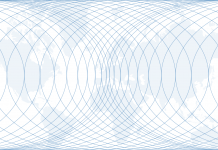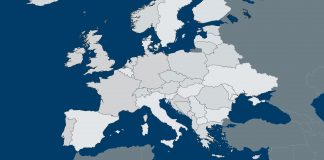The war in Ukraine is raging with no end in sight. Neither Russia nor Ukraine is ready to sit at the negotiation table. Both claim that their goals are absolute and non-negotiable. With negotiations not an option, both are determined to exhaust the enemy’s resources, manpower and technological potential, and to finally “throw his adversary, and thus render him incapable of further resistance,” in the words of Clausewitz. In the meantime, Russia’s actions in Ukraine paint a clear picture of Moscow’s doctrinal thinking about warfare, and illustrate that Ukraine is only one part of Russia’s broader economic and geopolitical objectives.
The invasion of Ukraine marks the next stage in the global confrontation between East and West. The East, led by China and Russia, wants to revise the political-economic order, which has the U.S. at the center. The confrontation’s military expression, in Ukraine, could easily spill over into other parts of Eurasia. Neither side wants this, and perhaps a unique feature of this 21st-century confrontation will be its localization. There were many localized military confrontations between East and West during the Cold War, such as Vietnam and Afghanistan. So far, it is unclear who is benefiting more from the prolongation of the war in Ukraine. In fact, one could argue that all involved parties are losing; all are experiencing economic and other hardships that will only grow.
To understand the course of the war, it helps to understand the influences of contemporary Russian military doctrine. Russian doctrine begins with the Marxist theory of war, which teaches that war is a continuation of politics, a premise taken from Clausewitz. The mainstream Russian military school also inherited the dialectical vision of war, where any local war is part of the global geopolitical rivalry with “Western imperialism.” Russian doctrine is also influenced by the Maoist view, which pursues multiple fronts in the event of protracted wars. In practice, this means Russia (and the Soviet Union before it), as well as China, targets the so-called Third World as a means to undermine Western power.
Finally, it is now obvious that when Russia initiated the war, the Kremlin decided on the theory of permanent mobilization. This was developed by the Soviet military theoretician Alexander Svechin, who proposed that the state must avoid “over-mobilization,” which he defined as mobilization of all of society and the economy and which can set off political crisis or even revolution. Svechin suggested that the economic situation must be deeply assessed before and throughout the war. The economic rear should be secure and out of the enemy’s reach.
These perspectives help explain Russia’s economic and military approach to the Ukraine conflict. At the global level, Russia launched ideological, resource, energy and economic-financial wars against the West. The goal is to exhaust the West’s economic and financial potential, particularly the dominance of the U.S. dollar. Ukraine is one of the biggest countries in Europe in terms of population and territory, so it can easily absorb a massive amount of dollars. Russia hopes that the enormous burden of economic and military support for Ukraine will create divisions inside NATO and the European Union. On the battlefield, Russia has not given up its primary goal to occupy the Donbas region and other areas of “Novorossiya” in southern and eastern Ukraine. It continues its hidden mobilization campaign, and continues to threaten Kyiv and the rest of Ukraine.
Russia understood the war to be against the West from the beginning, but since more advanced Western weapons started arriving in Ukraine, particularly HIMARS (High Mobility Artillery Rocket System), it’s become an inescapable reality. Effective rocket strikes on the Russian army’s rear, bridges and ammunition depots were a wake-up call. The Ukrainians surprised with their ability to grasp and incorporate new technologies into the war. Russia responded with a change of tactics and strategy. It is now avoiding closing the front or concentrations of ammunition depots and hardware. Further, it is seeking new ways to counter the HIMARS, for example by using the Buk-M3 and Pantsir anti-aircraft missile systems to attempt to intercept the rockets.
But the geopolitical and military realities are such that Russian officials must continue to prosecute the war because they have yet to achieve their goals. To stop the assault without taking Donbas would be political suicide, even for Putin. Disruptions to food supplies, migration patterns and energy markets are the only real leverage Russia has left.
Indeed, the situation will escalate in spite of the red lines issued by both sides. Russia wants to keep the conflict an indirect one with the West, and it wants the West to limit military support and weaponry that could, for example, threaten the Russian homeland or undermine Russian control of its own airspace. The West, and especially NATO, wants to keep the conflict from spilling into more sensitive regions such as the Baltics and Poland. So far, no one seems ready to give up the ghost despite heavy losses.
Red lines aren’t inviolable, of course, but they provide a sense of what it would take to kick off a much greater war, or even a nuclear exchange. So far, all sides, including Ukraine, are ready to continue apace. Russia hasn’t yet directly attacked Ukraine’s political and military centers, nor has it carpet bombed Ukrainian cities en masse. But the weaker the Russian army gets, the more tempting it will be for it to take more drastic actions. The West is still an important source of military assistance, but that assistance consists of older aircraft and other air-defense platforms. If it starts to send more sophisticated and cutting-edge technologies, it would alter the balance of power in the conflict and thus potentially draw the West and Russia into an escalated war. The West is not currently prepared to take this risk.
The Putin regime intends to survive, so it is more than willing to play the long game. Moscow sees the war in Ukraine as just the military front in an economic, political and diplomatic conflict with the West. At a recent economic forum in St. Petersburg, Putin even said that actions against Russia will only further aggravate divisions in the West, as evidenced by Russia’s retaliation in the energy market.
Military theorist B. H. Liddell Hart said that “Grand strategy should both calculate and develop the economic resources and manpower of nations in order to sustain the fighting services.” Putin seems to have taken this to heart. Russia’s protracted war of attrition is meant to simply exhaust its enemies; making Ukraine a black hole that absorbs money and resources is central to this goal. For Russia to achieve its geopolitical objectives, it may only have to take its time.







